
Volume 16, October 2022
|
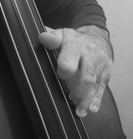 Picture 1 |
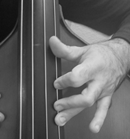 Picture 2 |
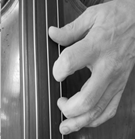 Picture 3 |
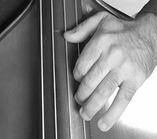 Picture 4 |
Another suggestion to prevent the left arm from contracting is to minimize the distance of the left wrist from the left shoulder. As the left hand moves away from the shoulder, controlling becomes challenging, which causes a contraction of the whole body, starting at the left arm. Picture 6 is the recommended arm position.
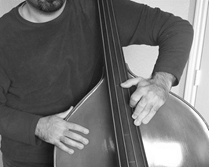 Picture 5 |
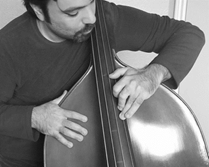 Picture 6 |
These recommendations for a healthy and effective thumb position should be considered when executing the A Mixolydian scale in Exercise 8 (below). Besides playing in the same position, the left wrist should move in the finger's moving direction while executing this example. Thus, the action is carried out with the whole hand and not only with the fingers. As a result, the hand will not be stiff, and the player gains extra speed.

Exercise 8. Irmak Sabuncu, Exercise for Thumb Position
A subsequent study (Exercise 9) contributes to the string-crossing ability of horizontal playing. This exercise was derived from Jeff Bradetich's "thumb drill" exercise.9

Exercise 9. Irmak Sabuncu, Exercise for Thumb Position
Finally, it is worth briefly mentioning the hand size adaptation. Because the positions on the fingerboard become smaller as one gets closer to the bridge, the hand position needs to be adapted to it. Exercise 10 aims to help the hand size adaption on different places of the fingerboard by executing the C and G major scales with the same fingering pattern.

Exercise 10. Irmak Sabuncu, Exercise for Thumb Position
2. Bow Stroke Types and Their Practice Suggestions in the Piece
6. Further Utilization Beyond Dragonetti
Sarah Lahasky, Editor
Editorial Board
Kathleen Horvath
Andrew Kohn
Shanti Nachtergaele
Fiona M. Palmer
Tae Hong Park
Sonia Ray
Phillip Serna
Usage Guidelines